“Is that another bone?” I ask, squinting. We’ve seen a lot of bones today.
“It’s a foot,” my husband responds. “A fresh one.”
As in, not just bones.
“A human foot?!!”
“No, an elk foot.”
Strange things happen out here.
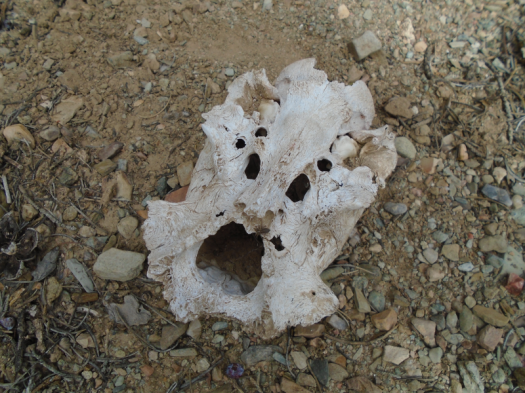
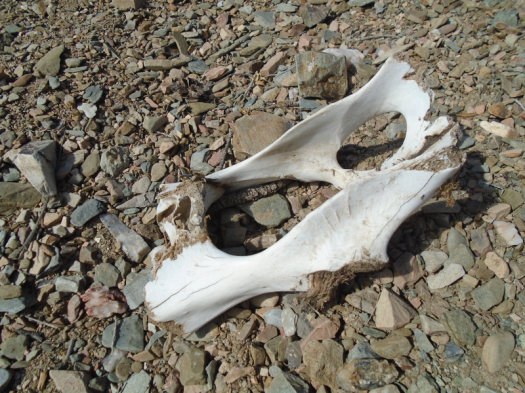
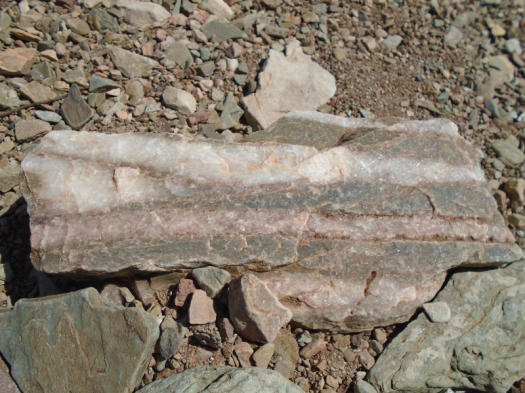
We came to the foothills of the Los Pinos Mountains for a four-mile hike using arroyos and old roads.
We used arroyos and old roads, and we hiked four miles, but we did not find the red rock butte or overlook that the route promised.
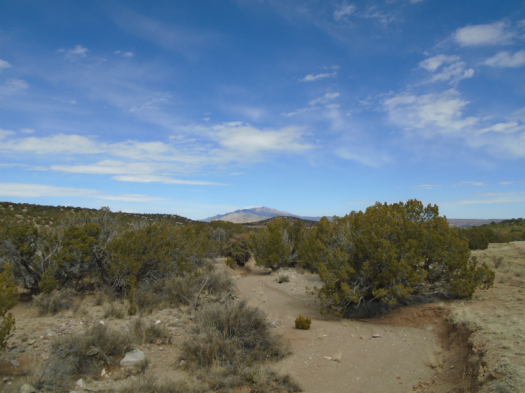
Now we look for fossils in the limestone layer on top of a ridge. Red fossils, with dissolved iron replacing rock.
Rocks and slabs clunk under our feet. The Manzano Mountains stand tall and gray against blue sky. The sun rakes them. When you’re in the Manzanos, lush microclimates abound. But from here they look naked, barren. A huge plain slopes to the west.
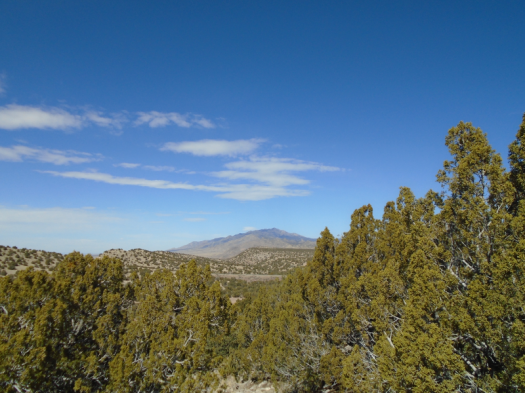
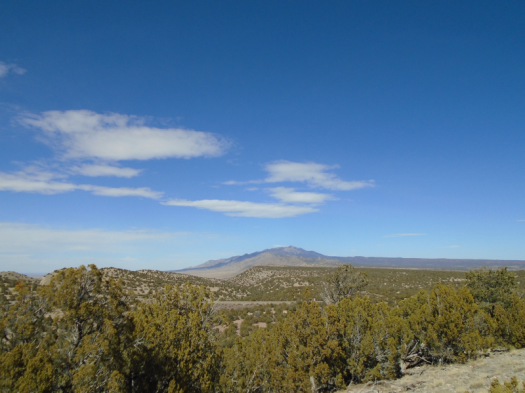
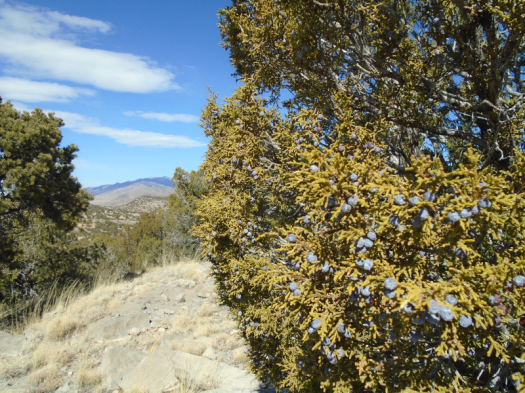
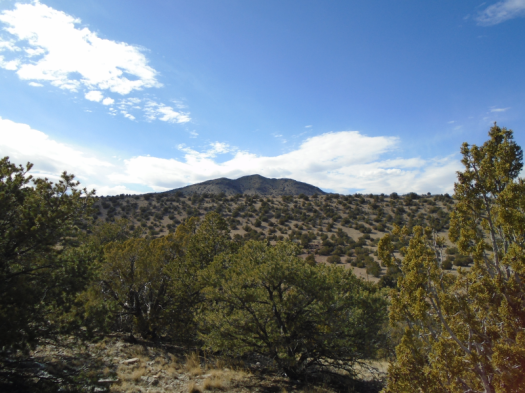
The red fossils begin to appear. They’re tiny. Million-year-old tube worms?
We sit on a rock slab. Next to me, a tiny fossil edged in red. Its interior sparkles like a geode.
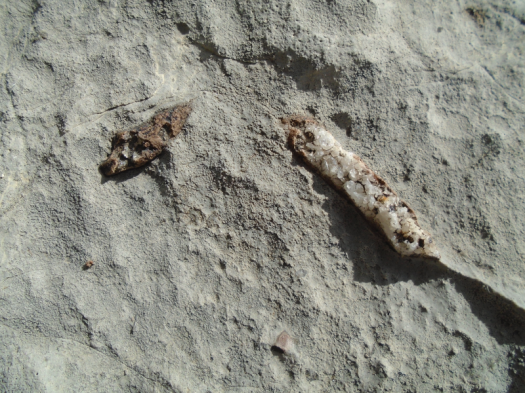
The sun and the breeze lull. Clouds roll shadow over the Manzanos and the mesa next to them. Silence falls. Vehicles whoosh toward Abó Pass.
When we stand up, after a long time, I see another tiny geode fossil in the rock where I’d sat.
The walk back to the car yields an impressive view of Cerro Montoso. The hike I might never finish.
The mountain looks gentle, draped with evergreen. A seam bisects it: a fence running straight up. The Sevilleta National Wildlife Refuge boundary.
Cerro Montoso has another name in our house: “scary hike.”
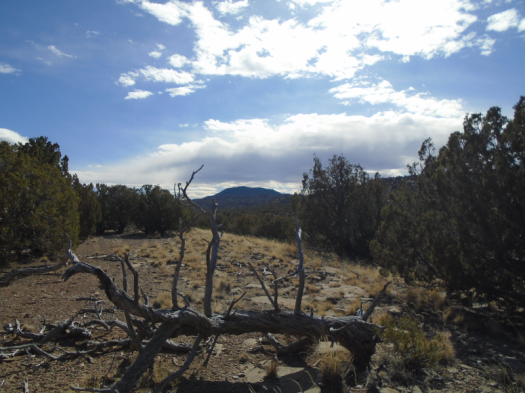
We came out here years ago to hike it. We saw more scat than I had ever seen in my life, most of which we could not identify.
On the way up, we passed an elk carcass. A mountain lion had torn out its throat.
The strenuous climb up the mountain took us so long we feared we’d run out of daylight. The sky hung low, ominous, but too flat and lazy to even threaten rain.
About two-thirds of the way up the mountain, we decided to head back down.
It was years before I knew that there was a good chance the mountain lion was still in the area that day, near its kill.
The path up the mountain isn’t a trail. It’s a steep, uneven corridor a few feet wide, barbed wire at your right elbow, thick cacti at your left.
Your first move in a mountain lion encounter, if you want to live: back away slowly.
It would have been almost impossible on that steep slope, with obstacles on each side.
In hindsight, I was not ready for that hike. I may never be, though I think often about trying it again one day. We had an incredible view of those mountains and plains as we climbed. The view from the top would be incomparable, and it’s one very few people have had.
I’m glad we found another route to explore these irresistible pinon-juniper hills. One with wide-open vistas, where you can see what’s coming – and where you could find escape routes if you needed them.
And I’m very glad we didn’t see anything more threatening than an elk foot.
Hike length: 5.5 miles
Difficulty: moderate
Trail traffic: none
Wildlife spotted/heard: crows, blue jays, cottontail, chipmunk, mountain chickadees
Notes:
This hike is from “60 Hikes Within 60 Miles of Albuquerque,” by David Ryan and Steven Ausherman, and it is the source of my information about why the fossils on the limestone ridge are red. Cerro Montoso was in an earlier version of the book, but has been removed. Maybe it scared them too.
Abundant and beautiful primitive campsites line the road that takes you to the limestone ridge. The fire pits in the campsites we saw had not been used in quite a while. This land clearly gets very few human visitors, and we speculated most of them come to hunt.
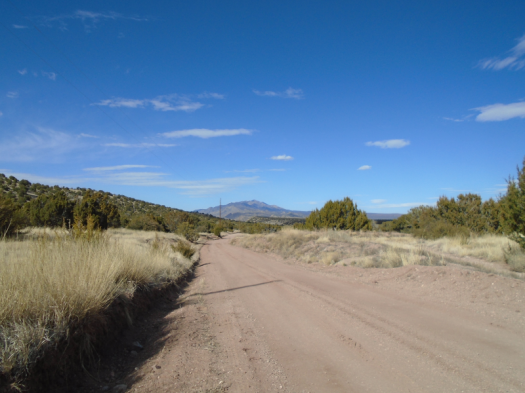
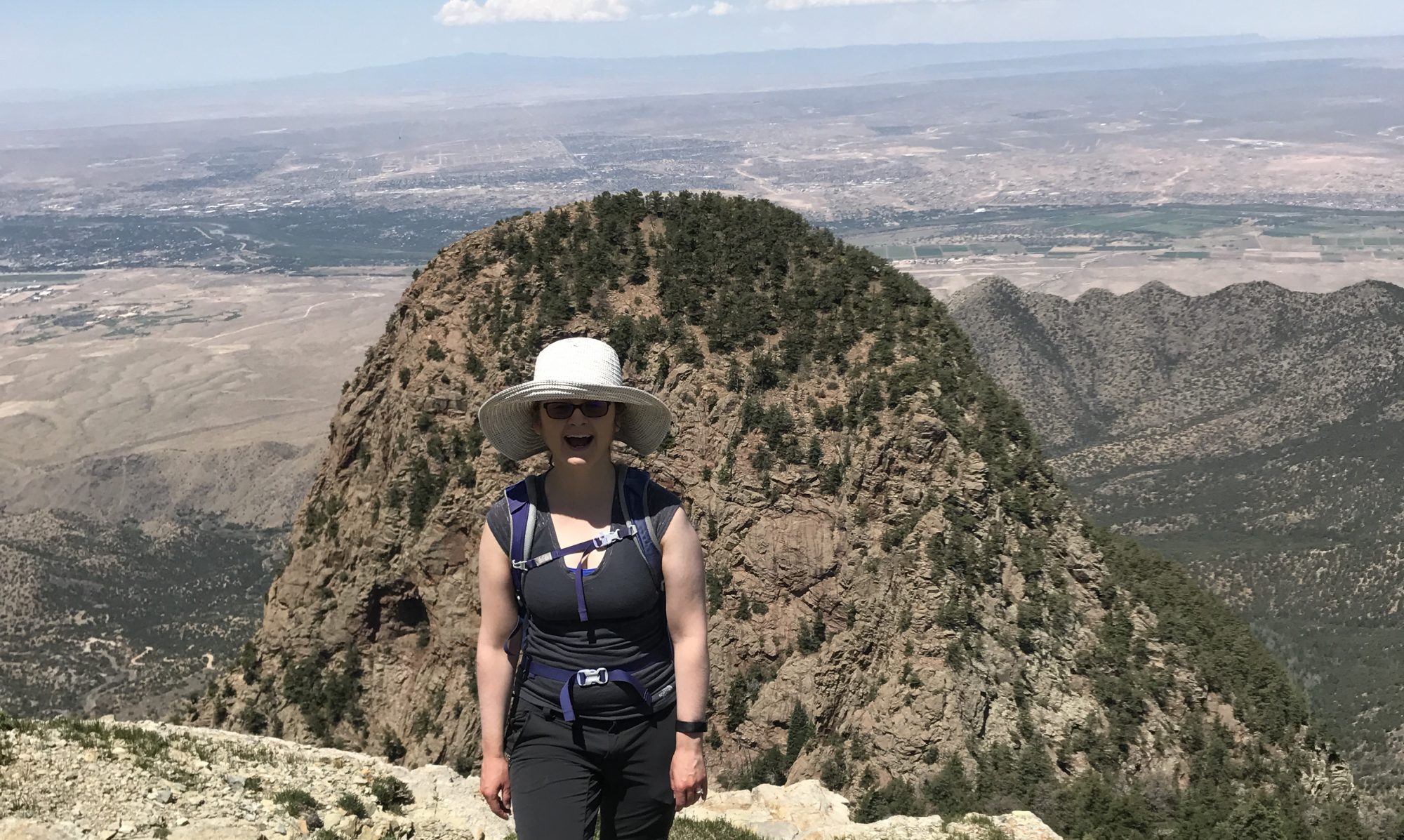

Beautiful and well written!
LikeLike
Thank you so much!
LikeLike
Very well written article and some nice photos too! My brother and I were fortunate enough to make it to the summit of Cerro Montoso in May, 2020 but it was not easy. Had I read your article first, there is a good chance we would have never set foot on the mountain!
LikeLike
Thank you so much for reading and for the kind words! I don’t know anyone who’s been to the top of Cerro Montoso – it’s super cool to get your comment. How was it up there?
LikeLike